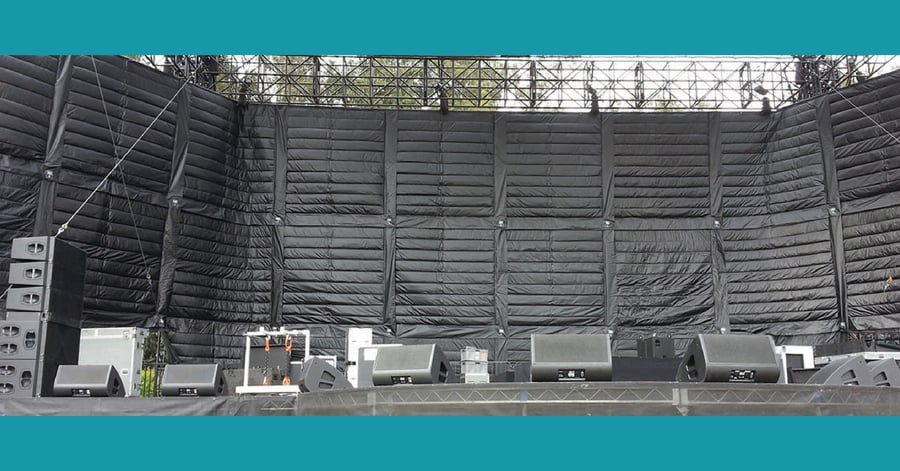
dBA vs. dBC: Understanding Sound for Perfect Event Acoustics
Jason Peetz
Imagine this: There’s a concert going on near your house. You can’t really hear the music from inside your living room, but you can feel the pounding of the bass.
That scenario — and ones like it — are why we measure sound in two different ways: dBA and dBC. One measures sound we can hear, the other measures sound we can only feel. Both are essential for understanding how to deal with loud events like concerts or conventions. This guide will explain dBA vs. dBC and provide practical strategies for keeping venues, neighbors, and attendees all satisfied.
Why We Need Different Ways to Measure Sound
Now, let's say you were at that concert. When trying to describe the event to a friend later, you wouldn't just say "The concert was great! It was really loud." That doesn't capture the full picture of your experience.
Acoustic measurement is similar. No single metric can capture all the important characteristics of sound. We need multiple metrics for two primary reasons:
- Our ears don't perceive all frequencies the same. Very low and high pitches can be damaging to our ears while still sounding relatively quiet to us.
- Sound behaves differently across frequencies. Low-frequency sound travels farther and penetrates buildings more than high-frequency sounds.
What’s the Difference Between dBA vs. dBC?
A decibel is a unit used to express the intensity of sound. However, standard decibels alone don't tell the complete story of how sounds affect us, which is why various weighted measurements were developed. There are many different types of measurements for different scenarios, including D, G, and Z weighted decibels. dBA and dBC are the most commonly used for large event acoustics.
dBA (A-weighted decibels) is a way of measuring sound that mimics how the human ear perceives it.
dBC (C-weighted decibels) is a way of measuring sound that captures low-frequencies that humans can’t hear and dBA sound measurement doesn't register.
By using both of these sound measurements together, you can understand both the heard and unheard effects of sound.
Why the Difference Matters for Events
Community event planners face a difficult challenge: deliver immersive sound experiences without bothering neighbors and drawing noise complaints.
Los Angeles has some of the nation's most sophisticated sound regulations, making it an excellent case study for understanding measurement differences. For example, events at the Hollywood Bowl must maintain 95 dBA with an additional dBC limit of 108 to control bass frequencies. A concert operating below the dBA limit might still draw noise complaints because the bass frequencies easily travel through structures and open air.
Sound Solutions for Event Acoustics
Once you understand the impact of sound from your event, you can start to identify the best solution.
Just as humans experience frequencies differently, sound barriers mitigate sound differently. They can be designed to target certain high or low-frequency bands. Environmental Noise Control, experts in measuring and mitigating sound, offer solutions for both.
Temporary Noise Barriers
We provide customized temporary noise barrier solutions tailored to each event's unique acoustic challenges:- Modular barrier systems that adapt to venue layouts and provide maximum effectiveness
- Targeted material installations that seamlessly blend into the background and contain sound at the source
- Property line barriers that protect sensitive neighboring areas
- Event-duration rentals with professional installation and removal
Acoustic Blankets
Our acoustic blankets can be strategically installed to help create controlled sound zones within your event space:- Stage wing absorption to reduce side-stage bleed
- VIP area treatments to create conversation-friendly spaces without sacrificing musical impact
- Backstage noise reduction for better communication
Planning a Large-Scale Event? Think ENC
When planning your next special event, remember that:- dBA measurements alone don't tell the complete story about how sound will impact surrounding areas
- Low-frequency management is crucial for neighborhood-friendly events
- The right combination of acoustic solutions is essential for a successful event
With over four decades of experience across many industries, including entertainment and events, Environmental Noise Control has the expertise to assess your venue and recommend the most effective solutions that keep everyone happy.

